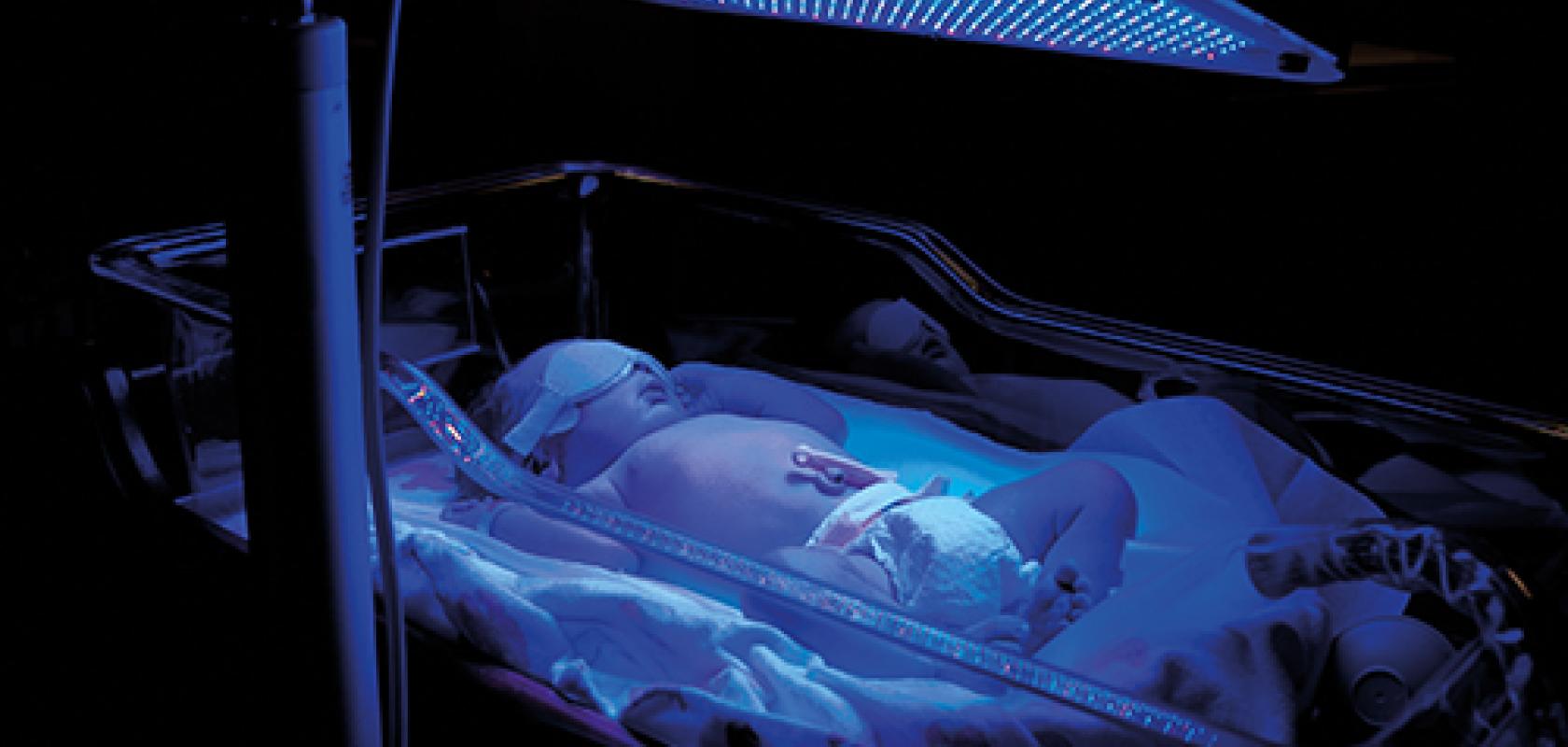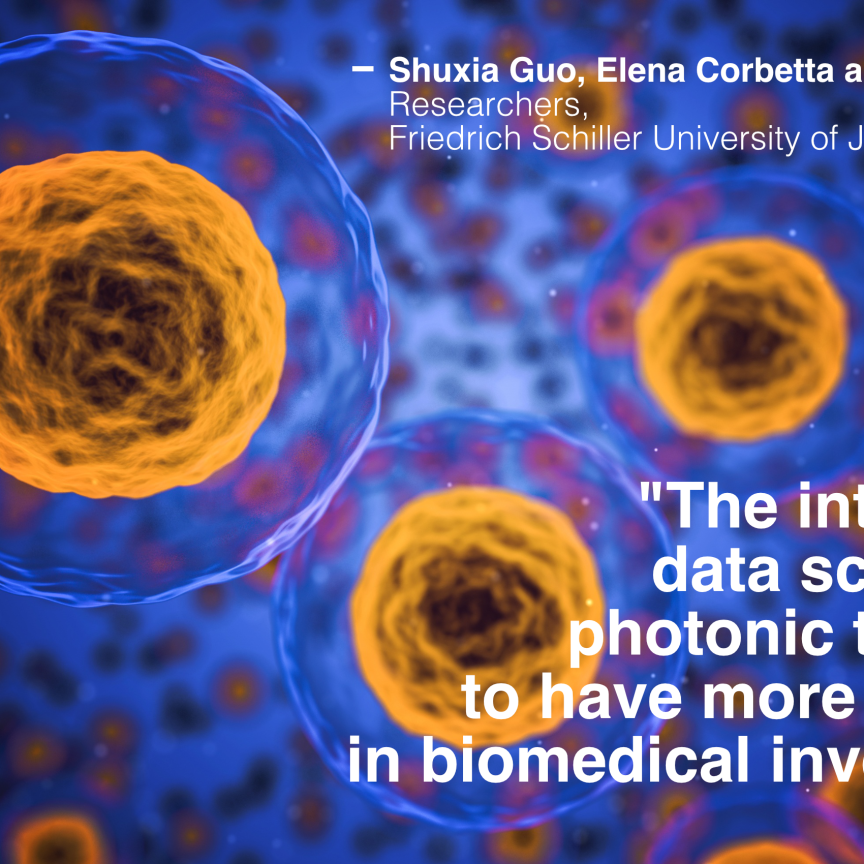Phototherapies have been used for many years by healthcare providers and, in fact, some 60 years ago, Dr Richard Cremer first reported its viability for treating jaundice in neonatal babies. Today’s market has seen a renewed interest in using light as a therapeutic tool thanks to the ability to target specific tissue regions or areas of the body.
Dr Tom Beale, from the Centre for Healthcare Photonics, part of Centre for Process Innovation (CPI) in the UK, said: ‘We are seeing a particular interest in photodynamic therapies, where light is used as a trigger for therapeutic delivery.’
Novel material and drug development are at the heart of photodynamic therapy, including one such therapeutic treatment being developed by LightOx, a spin-out from Durham University, UK. Its light-initiated treatment enables selected cells or tissues to be targeted, and could be used to treat infections or wounds, or even cancer cells.
CPI and Durham University, working in partnership through the European Regional Development Fund programme Spotlight, are helping LightOx to characterise and test its technology.
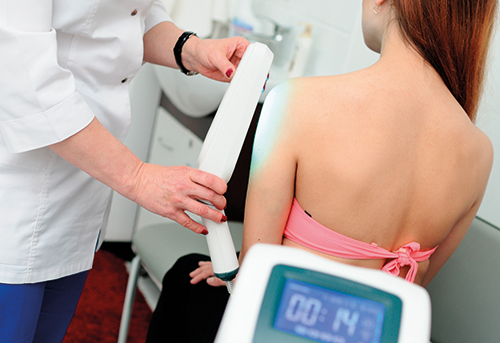
Light therapy is currently used to treat skin conditions such as psoriasis, skin cancer and vitamin D deficiency
Beale explained: ‘Photothermal therapy involves the use of near infrared laser light to generate localised heating in cancer tumour cells, sufficient to kill them by rupturing the cell membrane or denaturing proteins. Near infrared is chosen because it penetrates more deeply into tissue than visible light.’ The method is attractive, said Beale, because it is non-invasive and selective as to where and when the treatment is delivered. It can be combined with MRI imaging to identify and target metastatic tumours, or with chemotherapy or radiotherapy to remove cancerous cells missed by the laser light.
The treatment relies on a photosensitiser material that binds to the tumour cells and selectively absorbs the laser light.
‘Nanomaterials, including gold or other noble metal nanoparticles or nanocarbons, for example, are a good choice because they absorb strongly in this part of the spectrum due to their shape and size, as well as efficiently converting light to heat energy,’ Beale said.
CPI has facilities suitable for synthesising, characterising and pre-clinical validation of therapeutic nanoparticles to assist firms like LightOx.
Low-level light therapy
A separate phototherapy that doesn’t use photosensitisers, low-level light therapy involves illuminating the patient directly with one or more wavelengths at dose levels sufficient to stimulate a healing effect. Conditions where light is currently used to treat patients directly include neonatal jaundice, pain, skin conditions such as psoriasis or skin cancer, and vitamin D deficiency, according to Beale.
New applications are being researched, such as the work of Professor Will Palin, at the University of Birmingham, who is researching the application of low-level light therapy in dentistry and for the treatment of oral disease.
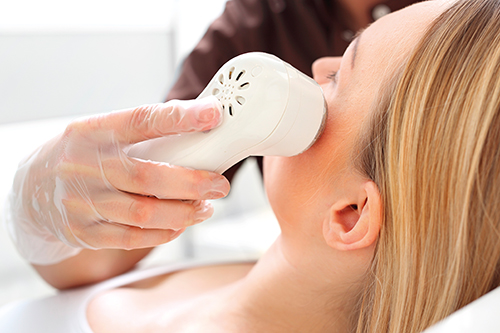
Low-level light therapy is developing because of the cosmetic market
Beale believes that innovation in this traditional phototherapy lies in the clinical application and the technical delivery of the light, as he explained: ‘Typically, a low intensity of light over a large area is required, with high efficiency to reduce thermal load,’ he said.
‘New large-area light sources, such as organic LEDs, are therefore ideal for this application, particularly if they can be made conformal and lightweight.’ Companies developing OLED lighting panels can now take advantage of a pilot line service, such as Lyteus, to produce their concept products. Arrays of LEDs can also be used to make conformable illuminators and manufacture such arrays onto printed fabric or other flexible substrates; technology that is a core competence at CPI, Beale said.
All in the delivery
Start-up E-Care Tech is developing a phototherapy product for treating neonatal jaundice, a condition where the newborn has a build up of bilirubin in the blood. Its product contains LED-based light guides with a built-in cooling system. The firm’s Nan Jiang recently spoke about its product at the European Photonics Show workshop in Stockholm on healthcare photonics, organised by the EPRISE project.
Further workshops to assist companies involved in biophotonics and photonics in healthcare to overcome the challenges of getting their products to market will be held in October in Berlin, and November in Marseille.
One company familiar with the use of LEDs in phototherapies is photonic product and solution provider, Excelitas Technologies. Its Cermax xenon high-intensity white light is used widely in medical applications, specifically endoscopy, while its LEDs are starting to be used in some phototherapies in the medium to low intensity range.
Mark Gaston, a product manager at Excelitas, noted there’s always a need to couple more light into an optical fibre when manufacturing phototherapy equipment, often through efficient optical design.
Excelitas has supplied LEDs to develop a light blanket for treating babies suffering from neonatal jaundice. The blanket contains optical fibres that deliver light from a portable light source to the baby wrapped in it.
‘The advantage is that the infant does not have to sit in an incubator,’ Gaston said. ‘It can be carried around by the mother and still go through this treatment, and they can even take the unit home.’
Neonatal jaundice is typically treated by flooding the baby with blue light in an incubator. However, in some cases, there have been reports of the light making the nurses nauseous, according to Gaston.
The device operates over a broad, blue wavelength range, which is absorbed by the skin. ‘Getting the intensity and the ability to couple the light into a fibre is where our [Excelitas] skill comes into play,’ Gaston added.
When it comes to partnering with medical customers on projects such as this, Excelitas looks for applications that require skill in solid-state lighting or LED technology. With surgical lighting, Excelitas spoke to the top 10 customers or suppliers globally. ‘They had applications that were more specific for blue, and they wanted to develop this application,’ commented Gaston. ‘This fits our skill set [regarding LED technology] and what they typically don’t have is the skill set.’
Jim Clements, a product manager for the Cermax xenon light source at Excelitas, commented: ‘More light through narrower fibres is not only the Holy Grail, but is the biggest barrier as well [for many healthcare applications].’ The etendue concept restricts how much light can be packed into a fibre. ‘Every single OEM manufacturing endoscopy equipment or therapeutic equipment is looking to get more light over a narrower fibre. That is the hurdle.’
There’s also a need to integrate light sources on the end of an endoscope – so-called chip-on-tip technology. ‘If they can put the light source directly on the tip with the camera chip, you’ve got everything sensing right there,’ explained Gaston.
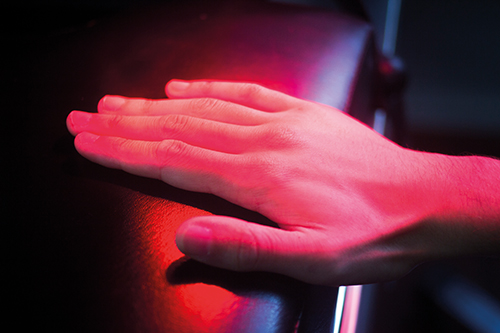
Arthritis or carpal tunnel can be successfully treated using light therapy
‘More and more, light is being used for therapeutic applications,’ Clements noted. ‘Intranasal brain repair is a very interesting area.’ This is using light to heal and stimulate brain cells, to treat traumatic brain injuries or neurological disorders like Alzheimer’s and dementia. Solid-state light sources between 600 and 650nm are used, although the wavelength has shifted to 810nm, according to Clements, because infrared light travels further into tissue and has been shown to be more effective. ‘In our lifetime I believe that these really devastating diseases are going to be a little bit more controlled,’ he added.
Cosmetics
Low-level light therapy, or photobiomodulation, is not new, but according to Richard Jollay, director at spectroscopy company B&W Tek, the technology is evolving because of the cosmetic market. B&W Tek sells light sources, along with its spectroscopy products.
Gaston remarked that cosmetic treatments like hair or tattoo removal is a large revenue stream for Excelitas. ‘This application is a pretty significant amount and is getting to be handheld units that people can just purchase off the shelf for $200 to $500. It’s moved from the dermatologists into more personal care,’ he explained. ‘Primarily, hair removal is what those small units are used for, but they’re very popular and they’re growing, and that’s using the xenon [light source].’
Jollay said: ‘If you consider laser surgery or skin surfacing – all of the stuff they do to make people feel better about themselves – the machines are very expensive and they don’t really sell that many.’
Using light to treat neurological conditions could be the next big thing, according to Jollay. ‘That is something that, for years, people have been very interested in, trying to treat dementia in particular, but also other brain-related illnesses. The problem is getting light through the skull,’ he said, which is why some treatments pass a fibre optic light source through the nasal passages.
Medical products have to be certified, which is a difficult and lengthy procedure. Jollay said that ‘to all the people out there who are sceptical, I will go on record as saying it works. I’ve had the opportunity to have my little bit of arthritis in the hand treated with a laser and it feels better.’
Looking to the future, Jollay believes that the use of photobiomodulation is going to depend on the development of technology. ‘What has to happen,’ he said, ‘is that photobiomodulation has to be able to replace an existing procedure and be less expensive. Can you improve care and reduce the cost? If you can do that, you’ve got something.’

